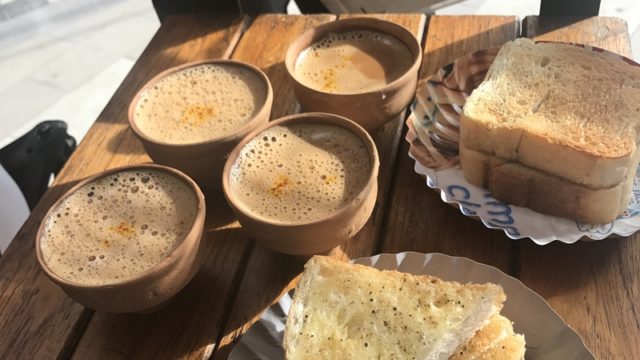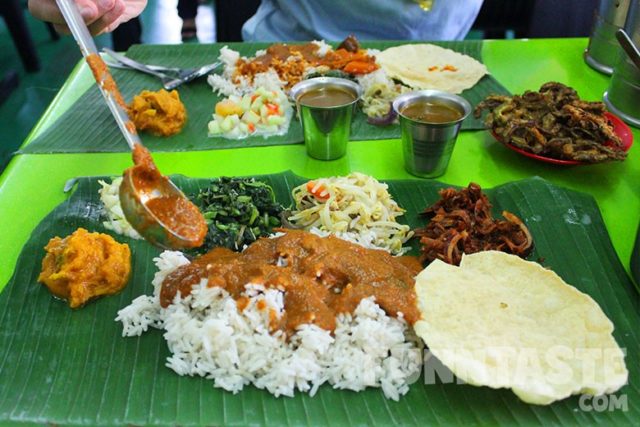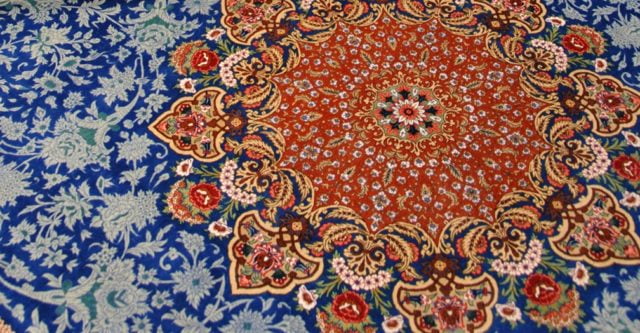Have you ever had tea in a kulhar?
Do you know what a kulhar is?
A kulhar is a container made of clay, traditionally made on a turntable and then baked in a kiln by the potter.

Even I didn’t know what it was until 2-3 years ago when I went to the outskirts of the city with my friends. A tea stall at the roadside was selling tea, in a kulhar.
Drinking tea in a kulhar was an everyday practice in India, before globalization happened to us. This practice was faintly dying, until it was revived recently.
Much to my delight, I have noticed, kulhar has become a trend now. And it is not just roadside tea stalls that are selling tea in it, even upbeat cafes have followed the suite.

An Eco-friendly Substitute
Unlike glass, ceramic, or plastic cups, this biodegradable container is very eco-friendly. It does not take decades to decompose, it turns into soil much faster than its counterparts.
Saving Professions
‘Kumhar’ is a caste that has been traditionally practicing pottery. The word itself literally means potter.
So the revival of using kulhar has been beneficial to this section in particular. Due to dwindling demand, the potters were changing their profession and their children were refusing to even learn the art.
Pottery had become their seasonal profession because they got employment from it only during Diwali when people bought diyas from them.

The kulhar trend has changed this. I talked to a cafe owner and she told me that she buys at the rate of Re. 1 per kulhar. (These were literally pint-sized, the price is higher for bigger ones.)
The payment goes directly to the pocket of the potter, round the year, thus supplementing his income.
But the whole deal is more than just monetary gains. Earlier, lack of demand was killing both, pottery as a profession as well as the several products a potter makes, kulhar being just one of them.
Monetary gains give the subsequent generations an incentive to learn the art of pottery, while the current generation gets an incentive to not abandon their practice.
Also Read: The New Delhi Art Book Fair Takes Delhi’s Culture Scene To The Next Level
A Few Other Resurrections of Old Practices
This applies not only to potters or the trend of drinking tea in a kulhar. The resurrection of old practices is a trend that has been observed in the last few years.
Such practices not only prevent cultures and traditions from dying, they are also opening up new means of livelihood; or as seen above, are saving old ones. The best part is these practices are useful to the consumer as well.
For instance,
- The importance of raw ‘haldi’ or turmeric has increased manifold as scientists have recognized its medicinal value.
- The same can be said about coconut. Once just ignored by the science community, it is now acknowledged for the multiple benefits that it gives; so much so that using it has become a fad-and a meme.
- Another example can be how serving food on banana leaves was earlier limited to a few local eateries in Tamil Nadu.
But the practice has now gained momentum and now even 5-star hotels are serving food in the same. There is even a banana-leaf-themed restaurant in Mumbai with the same name.
Economically as well, such trends increase the demand for otherwise less valued goods, which increases their price.
When talking of foodstuff, this also breaks Engel’s Law in economics which says that the amount of money spent on income falls as the income of a county increases.
Thus also increasing the income of the producers, who are usually impoverished farmers.
The revivalist trends are not just limited to the nutriment industry, this phenomenon can also be observed in the steadily increasing handicraft and textile industry.
The revival of these traditional practices, as stated above, help in maintaining a cultural continuum and keep the employment options open of the concerned communities. It also stimulates universalization of otherwise local practices.
Image Credits: Google Images
Source: Telegraph India, Wikipedia
Find the blogger @parihar_tweets
You’d also like to read:
TAES 2018 By MITHILAsmita Aims To Bring Indian Artisans And Entrepreneurs Under The Same Roof









































